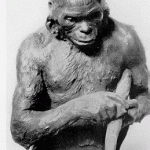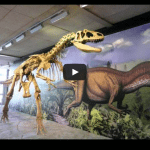The following is part of a faith-science integrating project for my Calculus III class this last semester. Part 1 was some hairy math and stuff concerning difference equations and its relation to the Fibonacci numbers. Part 2 was an application of the Fibonacci numbers to the teleological argument, which is basically an argument that claims that God exists because design in the universe requires it.
Here it goes:
Joel Keller; Dante Duran
Professor Varner
Calculus III
December 8th 2015
FIBONACCI PROJECT
The goal of this paper is to explore difference equations and the Fibonacci sequence, demonstrate command of the subject by doing some exercises, and to discuss the teleological argument and whether the Fibonacci sequence as observed in nature testifies itself to a Creator God.
PART 1
…
PART 2 The Teleological Argument and the Fibonacci Numbers in Nature
One might wonder why what’s so important about the Fibonacci sequence that we are dedicating so much time to its explanation. The main reason we speak of this is so that we can become aware of order and patterns within the universe.
When we look at patterns of nature, the golden section and the Fibonacci numbers can be observed in an abundance of examples. Sunflower seeds pods are packed in spirals of Fibonacci numbers. Leave sprouting patterns often happen to be such that they are each spread the golden angle apart from each other. Nautilus shells are curved along the golden spiral. Of this, Mario Livio, Ph.D Israeli Astrophysicist, said, “Nature loves logarithmic spirals… it seems that nature chose this marvelous shape as its favorite “ornament” (117).
Now consider the way most leaves stems sprout spaced the golden angle away from the previous one. This supposedly prevents leaves on the same twig to entirely shield each other from the sunlight. Some people propose that the golden angle is utilized in nature because its efficiency allowed the organism to evolve the feature. In other words, that the cause of the leaves being spaced by the golden angle is the fact that it is supposedly more efficient at gathering sunlight without shading itself. However, Donald E. Simanek, Ph.D and former Professor of Physics at Lock Haven University of Pennsylvania, rightly points out that, “The sun moves across the sky, so the ideal leaf position in the morning would be different at other times of the day.” He adds, “Then there are plants that live entirely in the deep shade of a forest and receive little or no direct sunlight, only diffuse light from all directions. Yet the emergence pattern of leaf stems is still present in many such plants. What use is the ‘shadowing’ theory to explain them?”
His reasoning is simple, in other words he argues that the selective advantage gained by such orientation is so small as to be insignificant. The sunlight to be potentially gained is too little to empower its evolution on the basis of that potential gain alone. How then did that feature arise?
Evolution by its nature is erratic and random. Generational steps are thought to make incredibly slow progress but extrapolating millions of years, the story goes, big changes occur. Think about the golden angle spaced leaves for a moment. It is thought that after millions of years, plants evolved the orientation due to its advantage. However, the supposed advantage across a mere generation (or generations) is so weak so as to be lost in the sea of more significant determining factors. Where it is planted, how much water it gets, how rich the soil is, whether it is a favorite snack for the beasts. Whether there exists a disease which plagues said plant. These factors are far more powerful in assigning advantage to one plant versus another. These factors, however, tend to be random. Plants don’t get to choose whether they get planted in a rich moist area in direct sunlight or in places poor in respect to all of these three qualities. Yet most shade dwelling plants and full-sun plants orient the leaves in such a way so as to separate the one leaf from the previous one by the golden angle. This could not have arisen on account of evolution.
It is also worth noting that most people perceive beauty in the golden ratio and in the golden spiral, its aesthetic seems especially pleasing. Why should it be that way? The golden section presents itself in nature in an abundance of examples on account of its efficiency and beauty. However, as we have discussed, there is effectively zero selective advantage because the advantage of being a little closer to golden spacing than the previous generation is just too small to even consider.
Therefore, this very same beauty and efficiency which defies a naturalistic origin must therefore be the tell-tale trademark of God’s handiwork. That it is the expression of God’s master design, beautiful and efficient.
Similar to how the way leaves sprout out spaced by golden angles and is for that reason quite efficient, so also the way bees make their honeycombs seems to be almost the most efficient way possible. You see, honeycombs are made in such a way that towards the inside of the honeycomb where two adjacent faces of the honeycomb matrix meet, three rhombi come from each side of the hexagon tubes of both to close off the inside. What is interesting is that regardless of the parallelograms’ size, the efficiency of the shape (measure of volume per surface area) of the honeycomb can be expressed in terms of the angle between the face of the rhombi and the tube centerline. Remarkably, bees construct their honeycombs at nearly the optimum angle. How could this have arisen? How could the bees have come to make the honeycomb so nearly optimum with no knowledge of calculus, something that we in our intelligence found necessary to determine the optimum angle?
It is thought that this is merely the result of evolution, as Frank Blume, Ph.D Mathematician and Professor of Mathematics at John Brown University, briefly argued:
…The standard explanation according to the theory of evolution can be stated as follows: of two hives competing for survival in the same habitat, the one with a population more highly skilled at using the available resources will have a competitive advantage and pass on the genetic secret of its success to its more numerous offspring. Since the building material for the honeycombs is one of the relevant resources, it is conceivable that the less skillful workers in one of the hives will gradually be replaced by the more efficient craftsmen emerging from the other. Eventually, as this process of genetically-based adaptation and selection continues over long periods of time, a breed of maximally efficient honeybees evolves that even stands the test of calculus. (197)
However, I have a couple issues with this story. First, the Author described this as “genetically-based” adaptation. Consider that it is a well known fact that deleterious mutations outnumber beneficial mutations by a large factor. So much are the good mutations outnumbered that the ratio of good to bad mutations is 0.00041! (John Sanford, 26). It is thought that natural selection is powerful enough to remove enough deleterious mutations so that beneficial mutations might outnumber the deleterious ones by at least a small margin. It is thought that it is this small margin of benefit accumulated over vast expanses of time that leads to the awe inspiring efficiency of nature. However, it is an assumption that natural selection produces progress merely because it rewards the best. As the mantra goes, “survival of the fittest!” but are the fittest necessarily more fit than their predecessors? Not necessarily the case.
Real world examples of “beneficial” mutations such as sickle cell anemia in humans or in bacteria developing resistance to antibiotics actually show the population naturally selected for as being worse off than the preceding one. Sickle cell anemia is normally disadvantageous, but in a context of widespread malaria, the relative immunity to which it confers provides an advantage but only within that context. Similarly, the bacteria which developed a measure of antibiotic resistance did so because the bacteria walls had mutated in such a way so that it was harder for anything, food and antibiotics both, to bind to the bacteria. Only in the context of an environment oversaturated with antibiotics does the less bondable bacteria wall actually confer an advantage. Normally though the effect is disadvantageous.
So the only real world examples of beneficial mutations are the result of nature selecting the “lesser evil” and not conceivably the better good. Natural selection allows an organism to overall decline in fitness in order to so much as survive.
Applying this discussion of the questionable effectiveness of natural selection to bring genetic progress suggests that natural selection may not be powerful enough to optimize geometric relations.
Moreover, it is an assumption that the slight increase in capacity for honey storage as a result of optimization should bring any advantage at all against less optimized cousin bees. It is well known that bees way overproduce honey respective to their needs. This is why honey business can go about stealing most of the honey bees make from them and selling it without sentencing their bees to ruin. They make way too much for mere survival. This excess can hardly be primarily the result of the optimization of the honeycomb structure but rather an effect of the bees instinctively busybodies work-ethic.
Only in a context where survival depends on the utmost efficient use of honeycomb materials can natural selection conceivably act to optimize the building structure. However, the bees work-ethic contradicts such a context since a little more or less efficiency will have slim to no effect since either way the bees will have to much to gorge themselves on. With this in mind, why should the honeycomb be optimized at all since the selective advantage of this optimization is so insignificant as to be negligible paired with the fact that deleterious mutation outnumber beneficial ones by more than 100 to 1?
Therefore, we are convinced that these examples are instead the result of God’s wonderful handiwork in creation. It is to His glory and not due to random chance that the bees should so marvelously construct their honeycomb in such a way and that leaves should sprout spaced by golden angles since the respective advantages are so slim to be negligible to have evolved by itself.
WORKS CITED
Blume, Frank. Applied Calculus for Scientists and Engineers a Journey in Dialogues. Sudbury: Jones and Bartlett Publishers, 2005. Print.
Livio, Mario. The Golden Ratio: The Story of Phi, the World’s Most Astonishing Number. New York: Broadway, 2002. Print.
Sanford, John. Genetic Entropy and the Mystery of the Genome. Lima, NY: Elim Publishing, 2005. Print 26.
Simanek, Donald E. “Fibonacci Flim-Flam.” Fibonacci Flim-Flam. N.p., n.d. Web. 8 Dec. 2015. https://www.lhup.edu/~dsimanek/pseudo/fibonacc.htm







